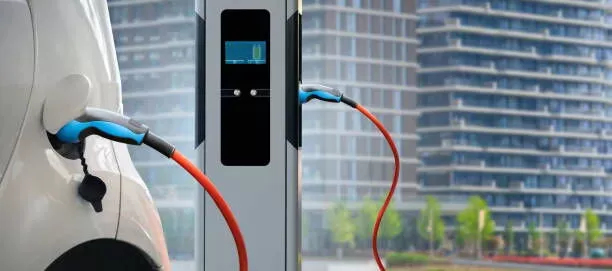Notifications

7 minutes, 17 seconds
-90 Views 0 Comments 0 Likes 0 Reviews

Powering the Future of Mobility
As a professional EV charger manufacturer in China, Topper Company provides dependable electric vehicle charging station equipment and comprehensive charging solutions.
As electric vehicles (EVs) revolutionize transportation, understanding how to charge them efficiently is more important than ever. Whether you're an experienced EV driver or just beginning to explore the world of electric mobility, knowing the difference between 110V and 220V charging options can help you make smarter, more convenient choices.
While EVs offer lower running costs, environmental advantages, and advanced technology, one often overlooked aspect is charging time. The speed at which your vehicle recharges depends largely on the type of charger and electrical supply available. In North America, the most common household voltages—110V and 220V—provide very different charging experiences.
In this guide, we’ll explain the key differences between 110V and 220V EV charging, highlight the benefits and drawbacks of each, and help you determine which option suits your lifestyle and home setup best.
Understanding the Basics: What Is a 110V Charger?
Also known as a Level 1 charger, a 110V charger is the most basic and widely accessible way to charge an EV. It plugs into a standard household outlet—the same kind you use for everyday appliances—and is included with most EV purchases in the U.S.
How It Works
Operating at around 12 amps and delivering approximately 1.2 kW of power, a Level 1 charger adds about 3 to 5 miles of driving range per hour.
Benefits of 110V Charging
Simple and convenient: No installation or special equipment required.
Cost-effective: Utilizes existing outlets without extra electrical work.
Safe: Meets household safety standards.
Drawbacks
Very slow: Charging a long-range EV can take 48–72 hours.
Limited practicality: Not suitable for drivers with longer daily commutes.
Less efficient: Longer charge times can mean more energy lost as heat.
What Is a 220V Charger?
Known as a Level 2 charger, this type uses a 220V (or 240V) outlet—the same voltage used for large appliances like dryers or stoves. It requires a dedicated circuit and is often professionally installed.
How It Works
Level 2 chargers typically run between 16 and 40+ amps, providing between 3.3 and 19.2 kW of power. This results in a charging rate of approximately 25 to 35 miles of range per hour.
Benefits of 220V Charging
Much faster: Full charge in 4 to 10 hours, depending on battery size.
Ideal for overnight charging: Wake up to a full battery daily.
Flexible: Enables quick top-ups anytime.
Drawbacks
Installation required: Involves electrician services and potential panel upgrades.
Higher initial costs: Total investment ranges from $500 to over $2,000.
Home compatibility: Older electrical systems may not support it without modification.
Side-by-Side Comparison: 110V vs. 220V
| Feature | 110V (Level 1) | 220V (Level 2) |
|---|---|---|
| Voltage | 110–120 volts | 220–240 volts |
| Power Output | ~1.2 kW | 3.3–19.2 kW |
| Range per Hour | 3–5 miles | 25–35 miles |
| Full Charge Time | 24–72 hours | 4–10 hours |
| Installation Required? | No | Yes |
| Best For | Light use, hybrids | Daily use, long-range EVs |
| Upfront Cost | Low | Moderate to high |
Can You Convert 110V to 220V with an Adapter?
No. Standard adapters don’t convert electrical voltage—they only connect devices to existing outlets. Proper Level 2 charging requires a real 220V circuit, complete with appropriate wiring, amperage, and safety protection. Using makeshift solutions risks serious safety hazards and can damage your EV.
Using Existing 220V Outlets Safely
If your home already has a 220V outlet (often found in laundry rooms or garages), you might be able to use a portable Level 2 charger with the correct plug. Be sure to:
Confirm the circuit amperage matches your charger’s needs.
Only use UL-listed adapters.
Follow electrical codes and consult a licensed electrician.
Smart Charging Features and Connectivity
Modern Level 2 chargers often include smart capabilities like Wi-Fi or Bluetooth for better control and efficiency. These features allow you to:
Schedule charging during off-peak hours.
Track electricity usage and costs.
Get alerts for charging issues.
Control settings via mobile apps.
These tools help reduce your energy bills and optimize your vehicle’s battery health.
Cost Breakdown: What You’ll Pay
Level 1 Charging
Charger: Included with EV
Installation: None
Monthly electricity: $20–$50 (varies by usage)
Level 2 Charging
Charger: $300–$700
Installation: $500–$1,500
Monthly electricity: Similar to Level 1, but more efficient
Though pricier upfront, Level 2 charging delivers long-term convenience and time savings.
Choosing the Right Charging Solution
Ask yourself these questions to decide which option fits your lifestyle:
Daily Driving Distance:
Under 30 miles? Level 1 may work.
Over 30 miles? Level 2 is better.
Overnight Charging Access:
Level 1 requires long charge times.
Level 2 provides more flexibility.
Home Electrical Setup:
Older homes may need upgrades.
Newer homes might be ready for Level 2.
Long-Term Ownership:
A Level 2 charger pays off over time.
Incentives and Rebates:
Many states and utilities offer financial support for charger installation.
Conclusion: Smarter Charging for a Cleaner Tomorrow
As EV adoption grows, so does the importance of having the right charging solution. Level 1 (110V) charging is simple and inexpensive but often too slow for everyday use. For most EV drivers, upgrading to Level 2 (220V) offers significantly better performance, efficiency, and convenience.
By evaluating your driving habits, home electrical capacity, and future goals, you can choose the charging solution that ensures your EV is always ready—efficiently, safely, and sustainably.Know more about Google SEO Directory

